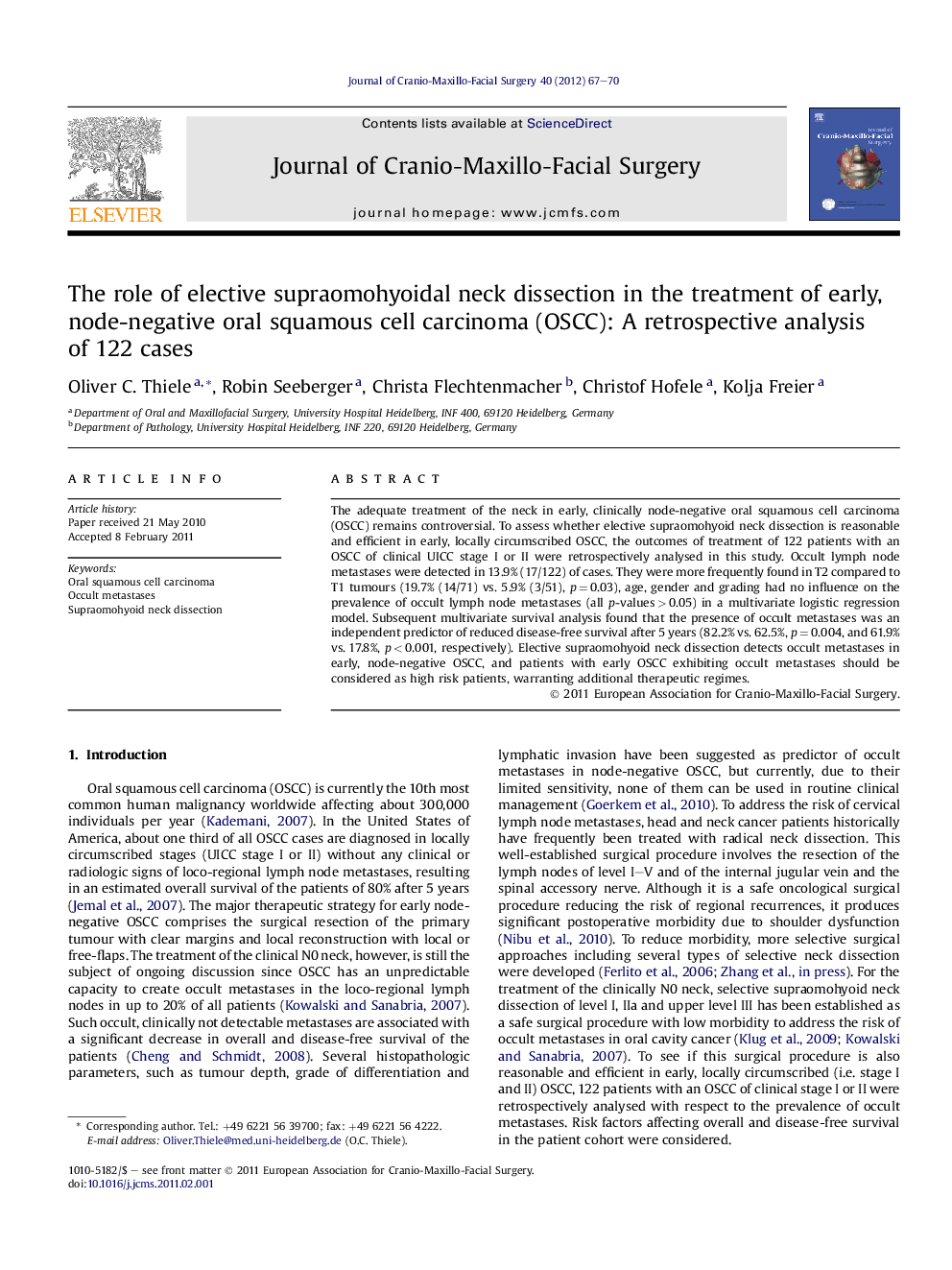| Article ID | Journal | Published Year | Pages | File Type |
|---|---|---|---|---|
| 3143658 | Journal of Cranio-Maxillofacial Surgery | 2012 | 4 Pages |
The adequate treatment of the neck in early, clinically node-negative oral squamous cell carcinoma (OSCC) remains controversial. To assess whether elective supraomohyoid neck dissection is reasonable and efficient in early, locally circumscribed OSCC, the outcomes of treatment of 122 patients with an OSCC of clinical UICC stage I or II were retrospectively analysed in this study. Occult lymph node metastases were detected in 13.9% (17/122) of cases. They were more frequently found in T2 compared to T1 tumours (19.7% (14/71) vs. 5.9% (3/51), p = 0.03), age, gender and grading had no influence on the prevalence of occult lymph node metastases (all p-values > 0.05) in a multivariate logistic regression model. Subsequent multivariate survival analysis found that the presence of occult metastases was an independent predictor of reduced disease-free survival after 5 years (82.2% vs. 62.5%, p = 0.004, and 61.9% vs. 17.8%, p < 0.001, respectively). Elective supraomohyoid neck dissection detects occult metastases in early, node-negative OSCC, and patients with early OSCC exhibiting occult metastases should be considered as high risk patients, warranting additional therapeutic regimes.
